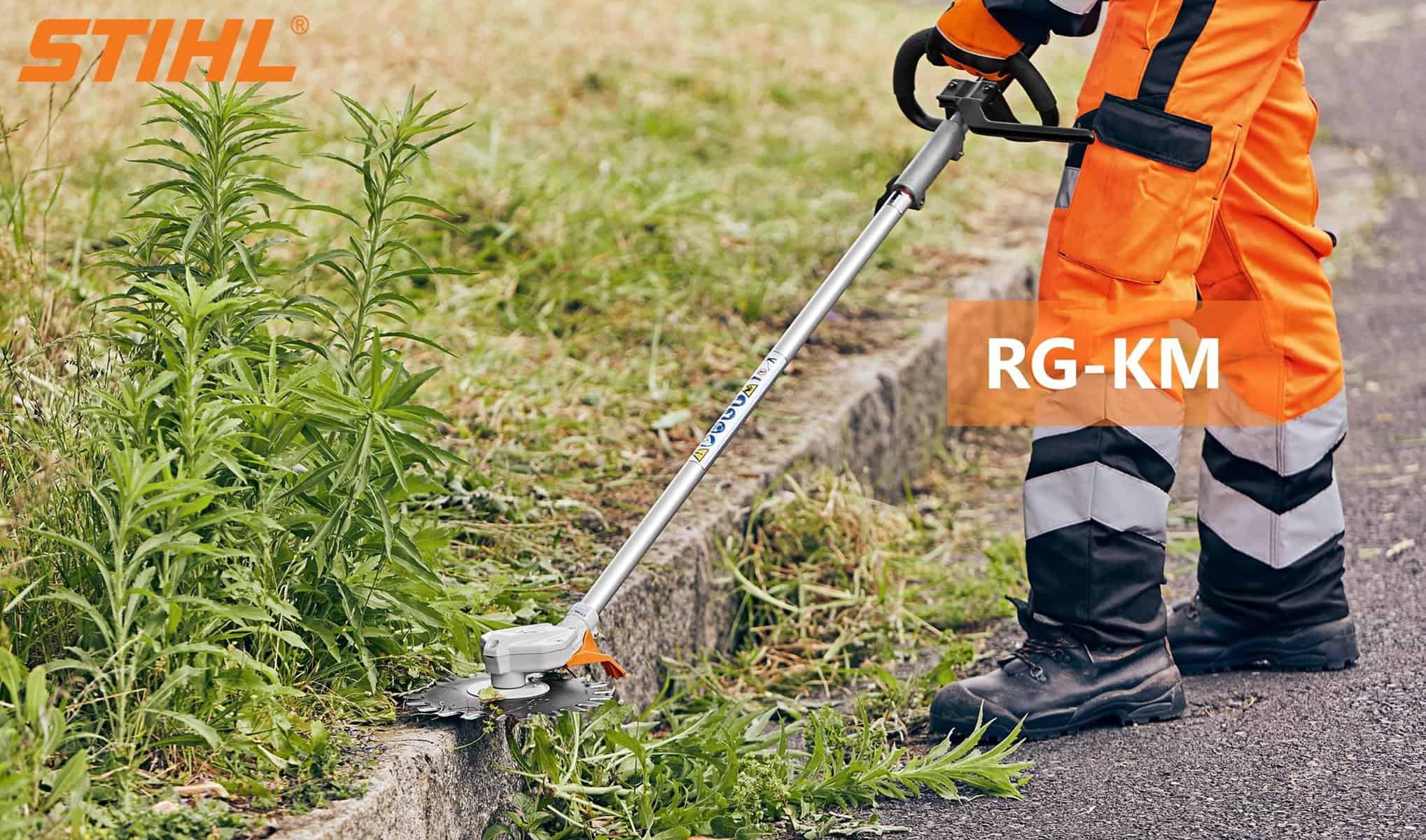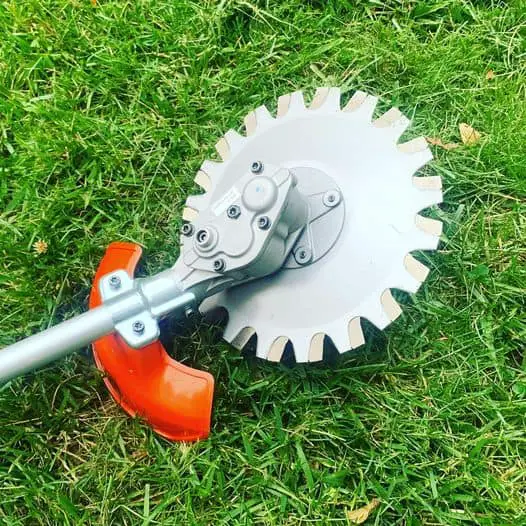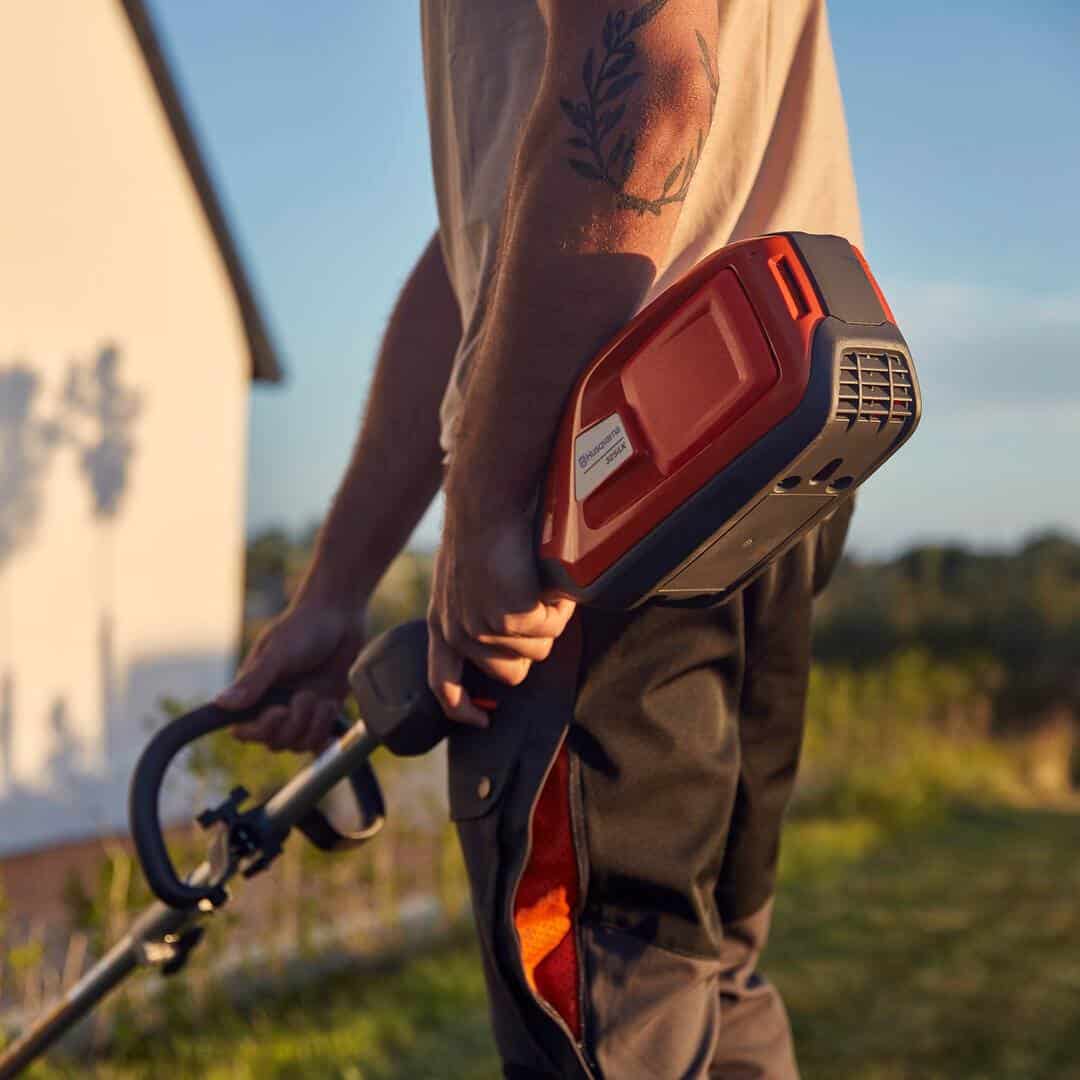Hi Everyone,
Wrestling with overgrown grass in your lawn can be quite frustrating. Having been through this myself, I’ve found that the choice of tool greatly impacts our struggle, especially between using rotary scissors and string trimmers.
This article delves into their differences, advantages, drawbacks, and how to choose what suits you best. Don’t miss out on getting the upper hand against those stubborn blades of green!
Contents
What’s The Difference Between Rotary Scissors Vs String Trimmer?
Rotary scissors and string trimmers are both great tools. But, they differ in key ways. Rotary scissors work with any straight shaft trimmer or brush cutter. You can get a clean cut with rotary scissors and move easily through thick stuff like grass, weeds, vines and even wood stems! On the other hand, we have string trimmers.
They are different from rotary scissors because of their long shaft and angled handlebar for better control. They also cover a bigger range when you use them to cut grass or weed around your lawn.
String trimmers come in handy but may not be ideal if precision is what you’re after as compared to power rotary scissors that offer neat cuts whether it’s light trimming or heavy-duty shredding jobs on your lawn! Remember to think about which tool will best serve your needs before making a choice between these two options – rotary scissors vs string trimmer.
Read more: What Grease For String Trimmer?
Rotary Scissors vs String Trimmer: Comparison Table
In this section, we will compare rotary scissors and string trimmers based on cutting power and efficiency, precision and control, ease of use and maneuverability, as well as safety considerations.
| Feature | Rotary Scissors | String Trimmer |
|---|---|---|
| Cutting power and efficiency | More powerful and efficient for cutting through dense vegetation and tough patches | Less powerful and efficient, but sufficient for trimming grass and weeds |
| Precision and control | More precise and easier to control, especially for edging and trimming around obstacles | Less precise and can be more difficult to control, especially when working near objects |
| Ease of use and maneuverability | More lightweight and easier to handle, making them suitable for beginners | Can be more cumbersome to use, especially for extended periods of time |
| Safety considerations | Less likely to kick up debris or cause fires, but still important to wear safety gear | More likely to kick up debris and cause fires, so it is essential to wear safety gear |
Cutting power and efficiency
Rotary scissors and string trimmers differ in their cutting power and efficiency. Rotary scissors are known for their strong blades that can easily cut through grass, weeds, vines, and even thick woody stems.
This makes them highly effective in tackling overgrown areas or tough vegetation. On the other hand, string trimmers are designed specifically for trimming grass and weeds. They are battery-powered and offer decent cutting power for regular lawn maintenance tasks.
Overall, if you have a lot of dense vegetation or tough patches to tackle, rotary scissors would be your best bet for efficient cutting power. However, if you primarily need to maintain a smaller lawn with mostly grassy areas, a string trimmer would suffice in terms of efficiency.
Ease of use and maneuverability
The ease of use and maneuverability of a lawn care tool is important for any homeowner. When it comes to rotary scissors, they are known for their simplicity and user-friendliness.
With rotary scissors, you can easily trim your lawn without any hassle. They are designed to be lightweight and easy to handle, making them suitable for beginners or those who may struggle with heavy equipment.
On the other hand, string trimmers also offer convenience in terms of ease of use and maneuverability. Additionally, some string trimmers have features like a telescoping shaft and quick adjustment on the handle, allowing you to customize the tool according to your height and comfort level.
This ensures that you can comfortably navigate around obstacles in your yard while maintaining control over the trimming process.
Both rotary scissors and string trimmers have their advantages when it comes to ease of use and maneuverability. Ultimately, it depends on personal preference and experience in handling these tools.
Safety considerations
Safety is an important factor to consider when using mowers and trimmers. When operating rotary scissors or string trimmers, it’s crucial to take precautions to protect yourself and others.
For example, with string trimmers, debris can be kicked up during use, so wearing safety goggles and closed-toe shoes is essential to prevent eye injuries and foot accidents. Another consideration is the potential for fires caused by accumulations of debris on mower parts.
To reduce this risk, make sure the equipment is free from grass clippings before starting and avoid refueling a hot machine. It’s also wise to follow manufacturer instructions for safe operation and maintenance.
Read more: Does String Trimmers Kill Weeds?

Pros and Cons of Rotary Scissors
Rotary scissors have several advantages. They are lightweight and easy to maneuver, making them ideal for trimming around delicate plants or in tight spaces. Additionally, they don’t require electricity or gasoline, making them a more environmentally friendly option.
However, rotary scissors may not be as powerful as string trimmers and may struggle with tougher vegetation. They also require manual effort to operate, which can be tiring for larger jobs.
Advantages of Rotary Scissors
I want to tell you about the good things of rotary scissors.
- Rotary scissors give a very neat cut. They move with ease over lawns that are cut low.
- They can cut many things. This includes grass, weeds, vines, and even thick stems.
- These scissors can also work close to fences, concrete, mailboxes, and flower beds with no damage done.
- There is an add-on called PRS-231M for power rotary scissors. This lets them trim near any surface without harm or kickback.
- This add – on also stops trash from building up.
- Rotary Scissors Vs String Trimmer? With rotary scissors, you don’t need string trimmers anymore!
Limitations of Rotary Scissors
Rotary Scissors have some downsides too. They don’t do well on high grass as they are made for low-cut lawns. The “humps” on the bottom help them glide but can get stuck in long grass. Handling them could be tough because they are heavy. Another issue is, rotary scissors might not fit all string trimmer models easily. You may need a specific attachment head like PRS-9.5 to make it work. Lastly, their sharpness and cutting power can turn into a safety risk if not used with care. So that’s some things you should know about the limitations of rotary scissors when taking care of your lawn!

Pros and Cons of String Trimmers
String trimmers offer versatility and can easily reach areas that a rotary scissors may struggle to access, such as tight corners or uneven terrain.
Advantages of String Trimmers
String trimmers have several advantages that make them a popular choice for lawn owners like us:
- Versatility: String trimmers can be used for a variety of tasks, such as trimming grass along fences, edges, and garden beds, as well as cutting down weeds and tackling overgrown areas.
- Lightweight and Maneuverable: String trimmers are lightweight and easy to handle, making it effortless to navigate around obstacles in the yard. This makes it convenient for us to reach tight corners and areas that are difficult to access with a traditional lawn mower.
- Affordable: Compared to rotary scissors, string trimmers are more budget-friendly, making them a cost-effective option for maintaining our lawns.
- Replaceable Cutting Line: The cutting string or line used in string trimmers can be easily replaced when it wears out or breaks. This ensures that we always have a sharp cutting edge without the need for purchasing new blades or tools.
- Suitable for Any Yard Size: Whether we have a small or large yard, string trimmers can handle the job effectively. Their versatility allows us to adjust the height and angle of the cutting head to accommodate different grass lengths and terrains.
Limitations of String Trimmers
String trimmers, while versatile and effective for certain tasks, do have their limitations. Here are some drawbacks to consider:
- Limited cutting power: String trimmers may struggle with thick vegetation or dense areas, making them less suitable for clearing large areas.
- Less precision: Compared to rotary scissors or brush cutters with metal blades, string trimmers may not provide the same level of precision and control in cutting.
- Difficulty with maintaining crisp borders: Trimmer/mowers, a type of string trimmer, cannot be flipped up on edge easily to maintain neat and defined borders around flower beds or other landscaping features.
- Weight considerations: Rotary scissors attachments for string trimmers can be heavier than regular string trimmer heads, which may make them more challenging to handle for longer periods of time.

Choosing the Right Tool for Your Needs
When choosing between rotary scissors and string trimmers, it is essential to consider factors such as lawn size, personal preferences, experience, and budget constraints.
Factors to consider
When choosing the right tool for your lawn care needs, there are several factors to consider. Here are some important things to think about:
- Lawn size and type: Consider the size of your lawn and the type of grass or weeds you need to trim. Different tools may be better suited for small or large lawns, as well as different types of grass.
- Personal preferences and experience: Think about your own comfort level and experience with different tools. Some people may prefer the ease of use of rotary scissors, while others may feel more comfortable with string trimmers.
- Budget constraints: Consider how much you are willing to spend on a lawn care tool. Rotary scissors and string trimmers can vary in price, so it’s important to find a tool that fits within your budget.
- Power and efficiency: Look for a tool that has enough cutting power to effectively trim your lawn. Consider how efficient the tool is at cutting through grass and weeds without causing damage.
- Precision and control: Think about how precise you need to be with your trimming tasks. Rotary scissors can provide more control for delicate trimming, while string trimmers may be better suited for larger areas.
Lawn size and type
To choose the right tool for your lawn, you need to consider its size and type. Some lawnmowers work better on small lawns, while others are more suitable for larger ones. For example, power rotary scissors can be used on all lawn sizes and types.
They are versatile and can handle different grass conditions effectively.
Reel mowers, on the other hand, are better for the health of the lawn. They gently cut the grass blades instead of tearing or shredding them like rotary mowers tend to do. This makes reel mowers ideal for certain lawn sizes and types.
It’s important to assess your garden tools carefully to determine which lawnmower is best suited for your specific lawn size and type. Consider factors such as maintenance requirements, cutting width, and maneuverability when making your decision.
Personal preferences and experience
Based on personal preferences and experience, the choice between rotary scissors and string trimmers can vary. Some people may prefer the ease of use and maneuverability of power rotary scissors, especially for beginners.
They find them extremely user-friendly and efficient for their lawn care needs. In fact, some users have even found that power rotary scissors can replace the need for string trimmers altogether.
Additionally, the cutting action of power rotary scissors allows for easy weed control with minimal effort from the operator. However, personal preferences and experiences may differ depending on factors such as lawn size and type, as well as budget constraints.
Budget constraints
When it comes to choosing between rotary scissors and string trimmers for your lawn care needs, budget constraints play a significant role. It’s important to consider how much you are willing to spend on the tool that will best suit your needs.
Rotary scissors tend to be more affordable compared to string trimmers, making them an attractive option if you’re on a tight budget. However, keep in mind that cheaper doesn’t always mean better quality or performance.
Take into account the long-term value and durability of the tool when considering your budget limitations.

Conclusion
When it comes to choosing between rotary scissors and string trimmers for your lawn care needs, there are several factors to consider. Rotary scissors offer precision and control, making them great for trimming grass, weeds, and even thick stems.
They are easy to use and don’t throw debris, reducing the risk of damage. On the other hand, string trimmers have their advantages too – they offer cutting power and maneuverability.
Ultimately, the choice depends on your personal preferences, lawn size/type, and budget constraints. So weigh your options carefully before making a decision!
FAQs
1. Can I use a string trimmer instead of rotary scissors?
Yes, you can use a string trimmer instead of rotary scissors if you need to cover larger areas or tackle tougher vegetation. However, keep in mind that string trimmers may not provide the same level of precision as rotary scissors.
2. Are there any safety precautions to follow when using these tools?
When using either rotary scissors or string trimmers, it’s important to wear protective gear such as goggles and closed-toe shoes. Ensure proper footing and be mindful of nearby objects and individuals to avoid accidents.
3. How do I maintain my rotary scissors or string trimmer?
To maintain your tools, regularly inspect them for damage or wear, clean any debris after each use, and store them in a dry place away from moisture. Follow the manufacturer’s instructions for specific maintenance guidelines like blade sharpening or lubrication.





